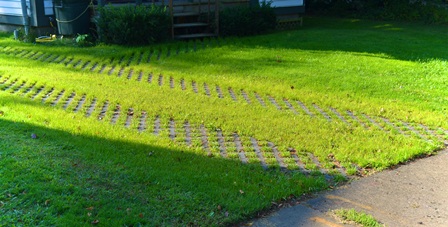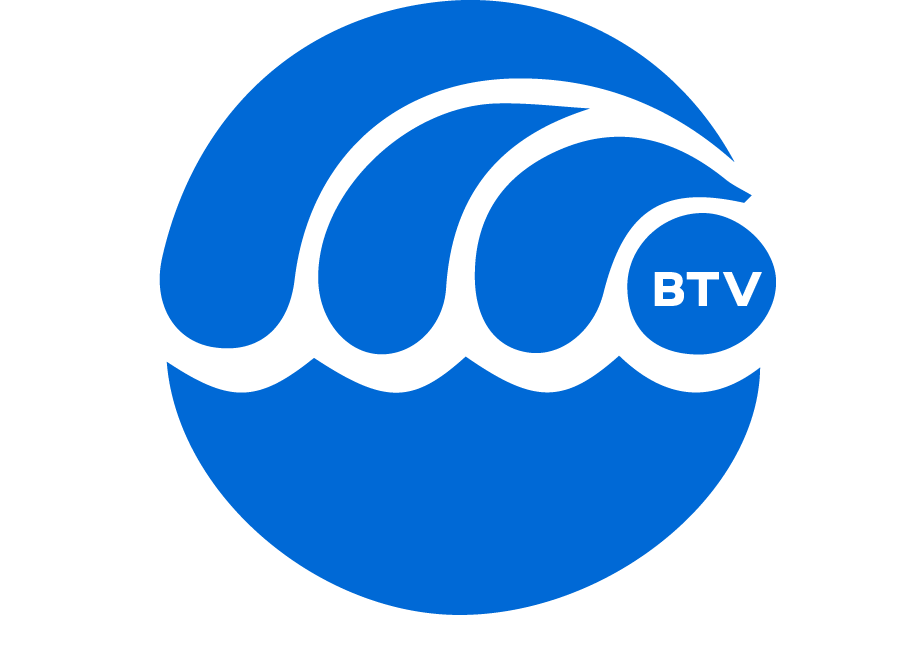BENEFITS OF STORMWATER FRIENDLY DRIVEWAYS
- Help improve Lake Champlain water quality by managing rain where it falls and reducing runoff from storms
- Solve or prevent erosion problems on your property, prevent puddles and the nuisance they create, reduce your use of sand and salt or other deicing chemicals, and keep gravel, sediment, and other pollutants out of your street, storm sewers, and Lake Champlain
- Increase the value of your home by beautifying your landscape, while benefiting plants and gardens by recharging the water table on your property

A stormwater friendly driveway can be an attractive feature of your property while helping water quality!
Driveways are an integral part of our residential properties. They afford better access and allow us to park off the street. Stormwater friendly driveways also allow water to soak away into the ground below, where it is filtered by the soil and can recharge groundwater, keep pollutants out of Lake Champlain, and reduce flooding risks. These driveways help conscientious homeowners reduce their individual contributions to the City's stormwater runoff challenges.
Unfortunately, our traditional driveways are often direct conduits for polluted runoff to drain quickly from properties into the street. Rain falling on impermeable, paved surfaces collects oil, deicing salts, fertilizers, and gasoline residue as it runs down the driveway to the street. Driveways also often capture runoff from adjacent rooftops, directing an even larger volume of water out to the road than what falls on the driveway. Runoff from sloped gravel or dirt driveways typically carries a significant amount of sediment. Much of this material stays on our streets, creating hazards for cyclists, while the rest of it clogs up stormwater infrastructure and pollutes Lake Champlain – not to mention the money that property owners pay over and over again to replace their lost driveway material.
The cumulative effect of rapid runoff from our homes and driveways can cause localized flooding, or overwhelm the sewer system and cause sewage to backup into basements. Once it gets to a storm drain, runoff is typically discharged to the lake with little or no treatment. Vermont has over a dozen stormwater impaired watersheds, all of which ultimately drain to Lake Champlain. The impact of urban stormwater runoff on the lake’s health, aquatic species, and our enjoyment and use is significant.
For these reasons and more, the City of Burlington Stormwater Management Program encourages the implementation of stormwater friendly driveways.
Stormwater friendly driveways are attractive and durable. Most types require minimal maintenance, last longer than traditional concrete or asphalt, and allow snow and ice to melt and drain away faster. If you are already planning to replace your driveway, consider making a better long-term choice for your home, your neighborhood, and the Lake.
Zoning restrictions and open space requirements often limit what you can build on your property, depending on the amount and type of manmade surfaces already in place. Choosing a stormwater friendly driveway, however, can reduce the amount of coverage calculated for zoning permit purposes and thus may allow you to construct additional building space elsewhere on your lot. In RL, RL-W, RM, and RM-W an additional 10% of lot coverage above the otherwise applicable limit may be applied for use of pervious pavements designed and maintained to infiltrate the 1-year/24-hour storm event on site.
CLICK HERE FOR THE COMPLETE SET OF STORMWATER FRIENDLY DRIVEWAY FACT SHEETS OR PICK FROM THE TOPICS IN THE MENU TO THE LEFT.
If you want to see more Burlington Stormwater Friendly Driveways, please visit this storymap.
Visit http://www.burlingtonvt.gov/DPW/Get-Involved for current grant opportunities that may help you implement your own stormwater friendly driveway or other practices.
These fact sheets were made possible through a $7400 grant from the Lake Champlain Basin Program and NEIWPCC.
Although the information in these documents has been funded wholly or in part by the United States Environmental Protection agency under agreement LC-96162901-0 to NEIWPCC, it has not undergone the Agency’s publications review process and therefore, may not necessarily reflect the views of the Agency and no official endorsement should be inferred. The viewpoints expressed here do not necessarily represent those of NEIWPCC, the LCBP Steering Committee or U.S. EPA, nor does mention of trade names, commercial products, or causes constitute endorsement or recommendation for use.
